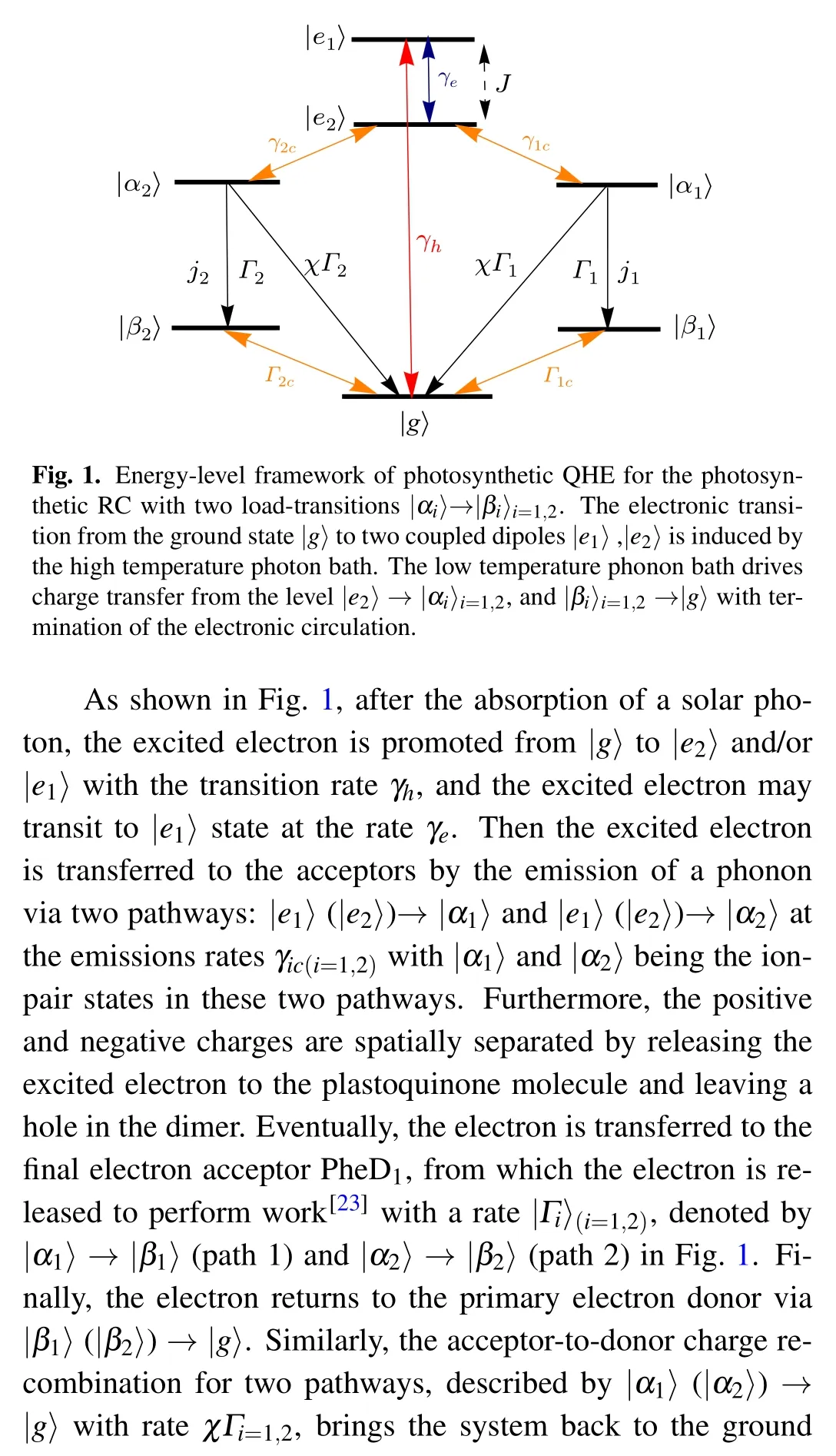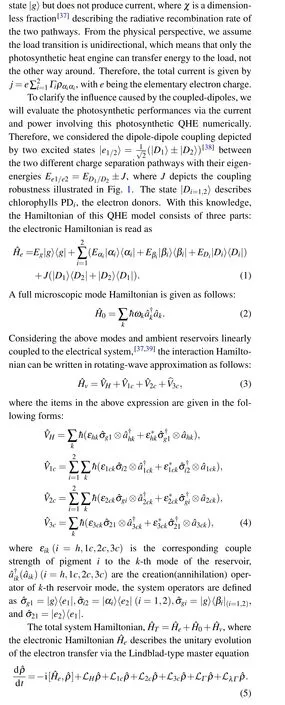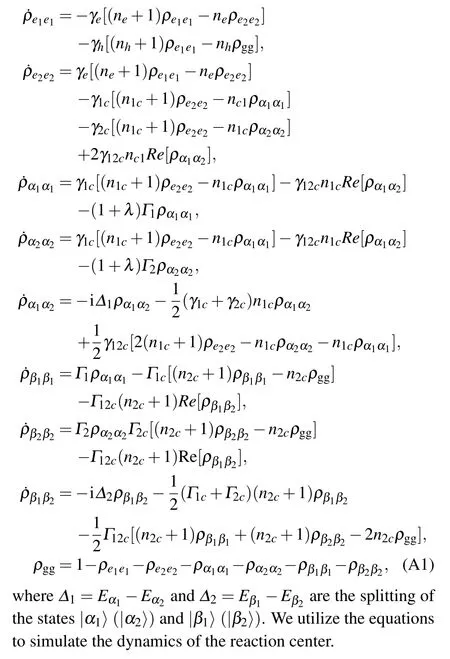Influence of the coupled-dipoles on photosynthetic performance in a photosynthetic quantum heat engine*
2021-05-06LingFangLi李玲芳andShunCaiZhao赵顺才
Ling-Fang Li(李玲芳) and Shun-Cai Zhao(赵顺才)
Department of Physics,Kunming University of Science and Technology,Kunming 650500,China
Keywords: photosynthetic performance,coupled-dipole,photosynthetic heat engine
1. Introduction
Charge separation is an essential process in the conversion of solar energy into chemical energy in photosynthesis.[1]After absorption of a photon which creates an electronically excited state in a pigment molecule,the excited state is transformed into a short-lived charge-separated state until it arrives at a reaction center(RC)[2–6]in the pigment-protein complex and results in a stable charge-separated state,which ultimately powers the photosynthetic organism.[7]The photon-to-charge conversion efficiency in the above process is considered close to 100% under certain conditions.[8–11]This eye-catching result sparks the researchers to explore its physics behind the energy conversion within photosynthesis.[12,13]People firmly believe that understanding its underlying mechanism involving photosynthesis can help us design novel artificial nanodevices for efficient quantum transport and some optimized solar cells.[14–18]Recently,some theoretical models[19–21]show that quantum mechanical behavior contributes to the high efficiency of biological processes.
Simulating the photosynthetic RC as a biological QHE,Dorfman et al.[22]suggested that photocurrent can be improved by noise-induced coherence in the photosynthetic RC.Creatore et al.[23]proposed a model for photosynthetic RC in which quantum mechanical effects were investigated. The results show that photo-to-charge conversion can be boosted via quantum interference caused by dipole–dipole interactions[24]between molecular excited states. And compared with classical photocell, this effect can increase the current and power output by 35%. In a multiple charge-separation pathways scheme,[25]the results demonstrated that a multi-pathway biological QHE was a better choice for the charge separation,improving the quantum current and power yield. Recently,long-lived quantum coherence in the pigment-protein complexes was observed and extensively investigated in some experiments.[1,26–29]
Although electron transfer in the photosynthetic RC has been thoroughly investigated in one or several chargeseparation pathways, and it is believed that two main pathways make a significant contribution to the current and power in the photosynthetic process.[30]However, works on the influence of the coupled-dipoles between two different charge separation pathways are rarely found. Therefore, we consider the coupled-dipoles between two different charge separation pathways involving the photosynthetic performance in a double-pathway[31]photosynthetic QHE model,which is different from the work that discussed the system–bath coupling effect on the exciton-transfer processes in the photosystem II reaction center via the polaron master-equation approach[32]in a QHE model. We no longer care about the impact of multicharge-separation pathways,[25,30]but turn our attention to the impact of the coupled-dipoles on the photosynthetic performance. We are focusing on whether the coupled-dipole is more beneficial to enhance the photosynthetic performances in this two-pathways biological QHE model,which can be used to mimic the process in the RC of the light-harvesting complex phycocyanin-645(PC645)with a pair of strongly coupled sites(called DBV C and DBV D).[12,33]
2. Model and equation






3. Conclusion

Appendix A
The density matrix dynamic element equations are given as follows:

杂志排行
Chinese Physics B的其它文章
- Speeding up generation of photon Fock state in a superconducting circuit via counterdiabatic driving∗
- Micro-scale photon source in a hybrid cQED system∗
- Quantum plasmon enhanced nonlinear wave mixing in graphene nanoflakes∗
- Restricted Boltzmann machine: Recent advances and mean-field theory*
- Nodal superconducting gap in LiFeP revealed by NMR:Contrast with LiFeAs*
- Origin of itinerant ferromagnetism in two-dimensional Fe3GeTe2∗
